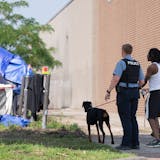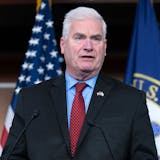Metro Transit plans to inspect its signaling equipment and review safety procedures in the wake of a series of recent crashes on local light-rail lines that have killed two people and injured three others.
The agency, which provides bus and train transportation throughout much of the Twin Cities area, also is set to enact new initiatives in an effort to keep people from being hit by trains, Metro Transit officials said.
Over the next month, the agency plans to post new warning signs and posters at platforms and inside rail cars emphasizing the proper way for motorists and pedestrians to interact with trains. In the spring, it will continue work on a painting project started last year designed to steer pedestrians and bicyclists from areas deemed unsafe. It also plans to launch a pilot project that will make more lights on signs blink when trains pass by.
"The safety of our passengers and well-being of our operators is a top concern," Adam Duininck, chairman of the Metropolitan Council, which operates Metro Transit, said last week. "I will make sure that we are taking every feasible action we can to make our services as safe as possible and to educate the public about how to stay safe around trains.
"I have also asked our staff to review any additional communications and outreach efforts we can undertake to amplify the message that safety is a shared responsibility."
To date, there have been 107 crashes involving pedestrians, cyclists and vehicles on the Blue Line, which has been running along Hiawatha Avenue in Minneapolis since 2004. There have been 60 on the Green Line, which runs between downtown Minneapolis and St. Paul and largely along University Avenue, since service began in June 2014.
Light-rail operator Dan Syverson believes there could have been more.
This week, as he piloted a 150-ton Green Line train down bustling University Avenue at speeds of up to 40 miles per hour, Syverson saw cars run red lights and cross the tracks illegally.

